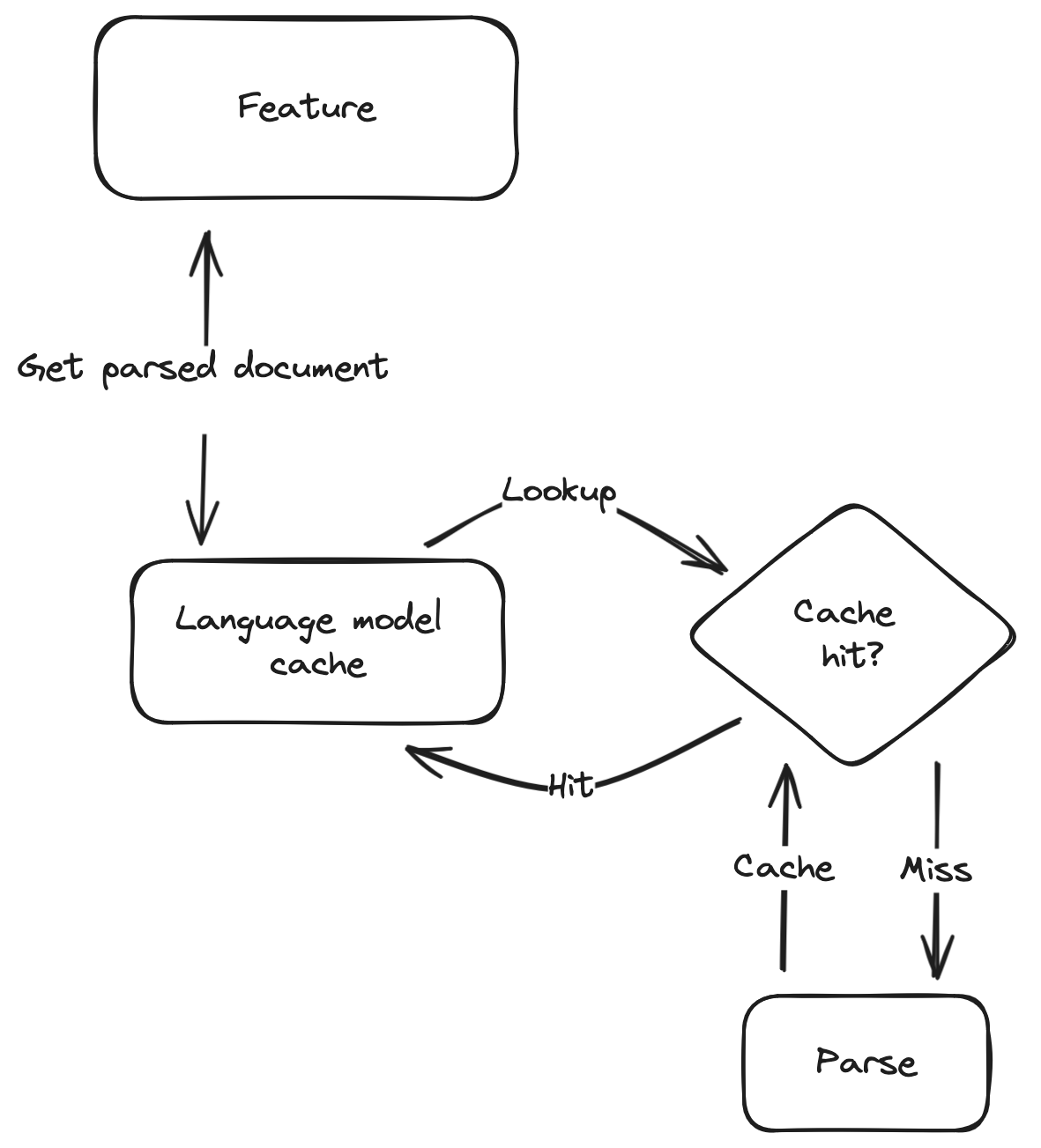Architecture
Being a language server extension, Some Sass consists of a client and a server. The client starts the server when it opens a file with SCSS or Sass code. This is called activation.
From there everything happens via messages.

Some Sass also works with Visual Studio Code in the browser. It works more or less the same as the regular Node version, except it doesn’t have direct access to the file system.
To work around this, the server makes requests to the client, which then uses the FileSystem API to work with files and directories, before sending the result back to the server.

Server architecture
The code for the server is divided in three packages:
- Language server
- Language services
- VS Code CSS language service
Language server
This package handles communication with the language client, scans the workspace for files to parse them, and not much else.
Language services
This is where you find the functionality of the language server, organized in classes that inherit from a base LanguageFeature class.
All features will parse the given document, but parses are cached for performance. The flow looks something like this:

A language feature takes a text document and will try to get a data structure representing the document’s Sass semantics such as variables, classes, functions and mixins.
The first time this happens the document gets sent to the parser, which returns this data structure. That result is cached. The next time a feature tries to get the data structure it will read from the cache. The cache entry is removed when the document changes so the new document can be parsed.
In addition to the parsed document, the cache also holds:
- The results from resolving links (
@use,@forward,@import). - The results from parsing the document’s Sassdoc.
- The document’s symbols, as returned from
findDocumentSymbols().
VS Code CSS language service
The project includes a private fork of the vscode-css-languageservice module. The original vscode-css-languageservice powers the CSS, SCSS and Less features in Visual Studio Code.
Some Sass extends this module’s parser and some of its language features to support both syntaxes. It’s kept as a separate package to simplify updates, and to make it easier to send patches upstream.